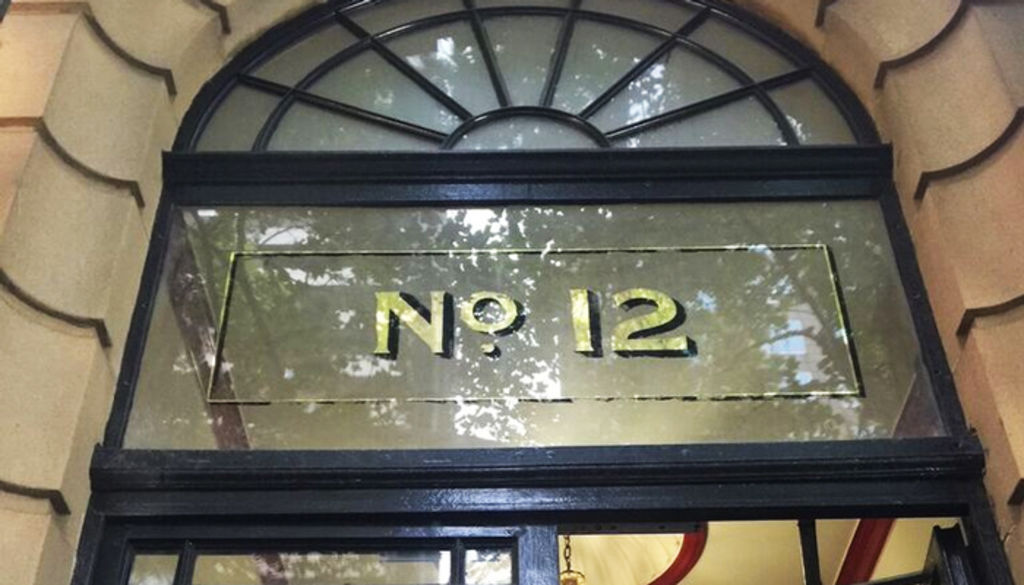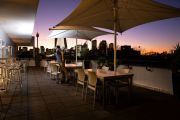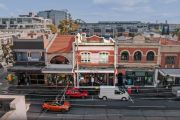
Luxury fashion house joins creative collective at Paris end of Collins Street
A recent arrival has put the spring into the “Paris end” of Collins Street, that end of town with rich fashion heritage now mainly expressed through iconic global fashion brands.
 The “Paris” end of Collins Street, Melbourne. Photo: Craig Abraham
The “Paris” end of Collins Street, Melbourne. Photo: Craig Abraham
The new location for luxury artisan atelier MATERIALBYPRODUCT (MBP) is No. 12 on Collins, the heritage-listed Victor Horsley Chambers, replacing former tenant the Planning Institute of Victoria.
“It’s a dream come true,” MBP creative director Susan Dimasi, pictured below, says of the move from North Fitzroy.
“I have always admired the first four buildings that elegantly line the top end of Collins Street and have always secretly wished to be in one of them.”
The Paris end of Collins became known in the mid-century for the dressmaking salons, photography and artist studios that clustered there.
The term “Paris end” was coined by the late by Lillian Wightman in the 1930s as a reference to her exclusive salon, Le Louvre, now in South Yarra, and the influence of Parisian design in Melbourne at the time, explained National Gallery of Victoria curator Paola Di Trocchio at MBP’s recent champagne launch.
The MBP atelier and showroom occupies three connected rooms and parquetry floors on the fourth level of the art deco building.
Sash windows with mottled glass in the internal doors and hallway wash the interior with tinted light, evoking an atmosphere of yesteryear.
 The entry doors to MBP. Photo: Rudi Williams
The entry doors to MBP. Photo: Rudi Williams
Behind the doors of the premises, the cutting atelier and “new collection salon” is to the left, with the hand-finishing atelier and “classics salon” to the right.
The sales salons and workrooms are not separated, so clients will experience the activity of a working atelier.
“It’s golden when your team remind you not to stray from your core,” Dimasi says.
She launched her new digs with her “classics” collection; pieces that are back by popular demand.
The label, which has as its hallmarks restrained, elegant tailoring and artisanal handcrafted processes, has won a cult following since it was born 13 years ago.
 MBP’s elegant tailoring worn by Olivia Bell, former principal artist with the Australian Ballet, with the new salon as a backdrop. Photo: Rudi Williams
MBP’s elegant tailoring worn by Olivia Bell, former principal artist with the Australian Ballet, with the new salon as a backdrop. Photo: Rudi Williams
 Georgian Revival is the building style of Victor Horsley Chambers at 12 Collins Street. Photo: Supplied
Georgian Revival is the building style of Victor Horsley Chambers at 12 Collins Street. Photo: Supplied
Di Trocchio told of meeting Dimasi while job-sharing at the NGV in 2003 as part-time assistant curators in international fashion and textiles.
They have remained friends as well as industry colleagues ever since.
In 2009, Di Trocchio sought Dimasi’s advice on what to wear to her first Paris Fashion Week.
“I needed something that was a little more special than the clothes I already had. Susan said, ‘I think this will suit you’, and she was absolutely right,” says Di Trocchio of a much-loved woodgrain printed cotton velvet trench and woodgrain printed silk satin slip that still transport her to the City of Light.
 The entrance to the heritage-listed Victor Horsley Chambers building at 12 Collins Street. Photo: Supplied
The entrance to the heritage-listed Victor Horsley Chambers building at 12 Collins Street. Photo: Supplied
Di Trocchio is currently exploring Australia’s fashion history, including the legacy of the Paris end of Collins Street, as curator of the NGV exhibition 200 Years of Australian Fashion, which runs until July 31.
MATERIALBYPRODUCT heritage embodied in seminal pieces presented in 200 Years of Australian Fashion @ngvmelbourne #heritage A photo posted by MATERIALBYPRODUCT (@materialbyproduct) on
The exhibition includes three MBP articles: a pair of tattooed shoes made from kangaroo leather by Preston Zly, which is part of of a “cabinet of curiosities” of fashionable items which specifically use Australian materials; and an ensemble which includes a pair of decorated kangaroo leather “sleeves”.
Victor Horsley Chambers has become something of a drawcard for creative tenants.
Both Sarah Scout Presents contemporary art gallery and Broached Commissions, which initiates limited edition design collections based on a different events in Australian history, moved in last year.
“They are making a bit of a creative hub and community in that building, and once you have an initiator things can follow,” Di Trocchio says. “The legacy still exists, but the narrative continues.”










